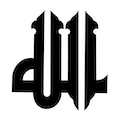بِسْمِ اللَّهِ الرَّحْمَنِ الرَّحِيم
The qibla (Arabic: قِبْلَة, lit. ’direction’) is the direction towards the Kaaba in the Sacred Mosque in Mecca – Saudi Arabia, which Muslims use in various religious contexts, particularly the direction of prayer for the salah. The Kaaba is a sacred site built by the prophets Abraham a.s. and Ishmael a.s, and that God ordained its use as the qibla in several verses of the Al-Quran revealed to Muhammad s.a.w. in the second Hijri year. Before this revelation, Muhammad s.a.w. and his followers in Medina faced Jerusalem for prayers. Most mosques contain a mihrab (a wall niche) that indicates the direction of the qibla.
The qibla is also the direction for entering the ihram (sacred state for the hajj pilgrimage); the direction to which animals face during dhabihah (Islamic slaughter); the recommended direction to make dua (supplications); the direction to avoid when relieving oneself or spitting; and the direction to which the deceased are aligned when buried. The qibla may be observed by facing the Kaaba accurately (ayn al-ka’bah) or facing in the general direction (jihat al-ka’bah). Most Islamic scholars consider that jihat al-ka’bah is acceptable if the more precise ayn al-ka’bah cannot be ascertained.
